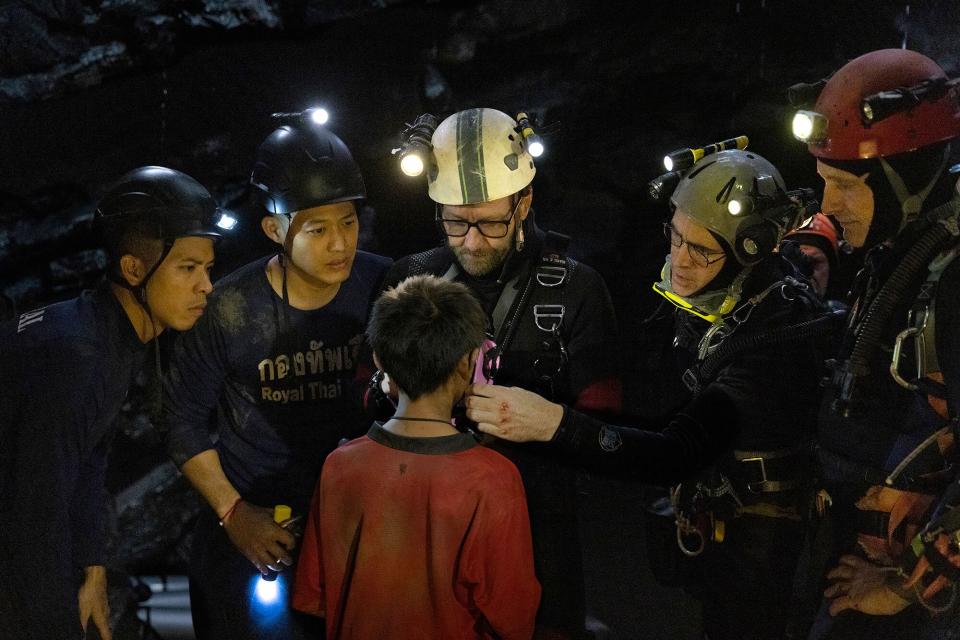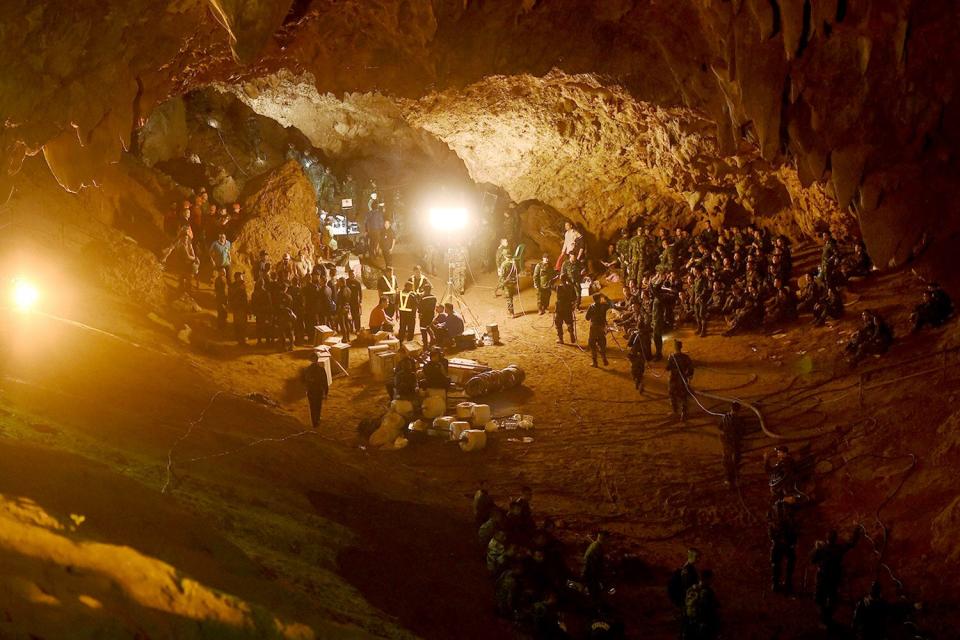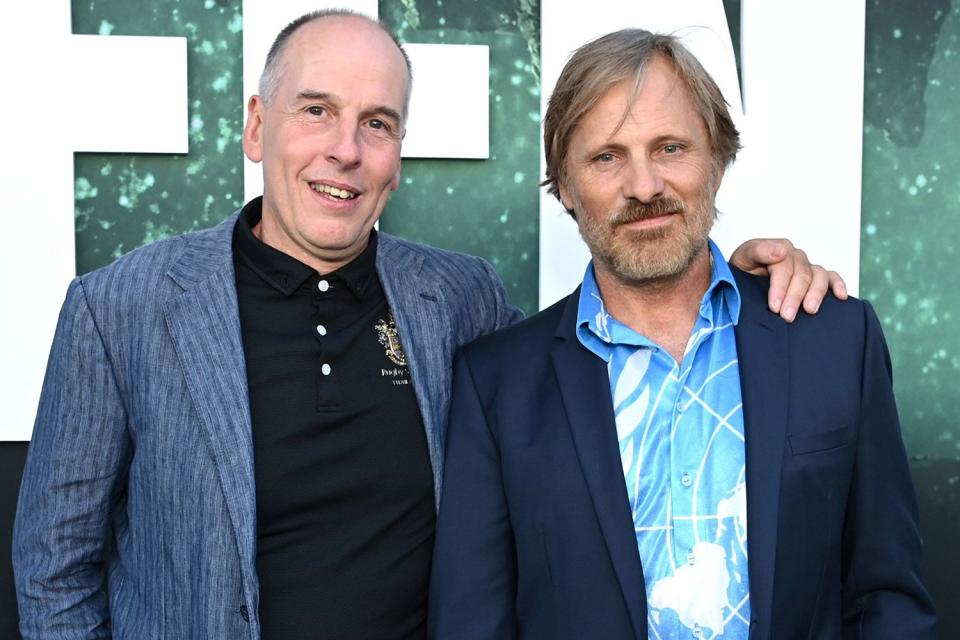Thai cave hero reveals the major difference between Thirteen Lives and the real rescue

- Oops!Something went wrong.Please try again later.
- Oops!Something went wrong.Please try again later.
Nothing can fully capture the experience of diving into the darkness of a flooded cave, crawling against strong currents and dangerous debris, squeezing between muddy crevices with unwieldy oxygen tanks, knowing that one false move, one sharp branch, could sever your tenuous lifeline to the surface.
But according to Richard Stanton — who lived through that very experience in 2018 while helping to save 12 boys and their soccer coach from a flooded cave in Thailand — Ron Howard's dramatic retelling of the rescue in his latest film, Thirteen Lives, comes about as close as you can get without getting your feet wet.
"It actually captures all the essence of the rescue as I recall it," the British cave diver tells EW.
That's at least partially because Stanton was there on set when the movie was filming. "I was there for two-and-a-half months whilst it was being shot," he says. "So I knew all the scenes quite intimately."

Vince Valitutti / Metro Goldwyn Mayer Pictures/Amazon Prime Thira ‘Aum’ Chutikul, Popetorn ‘Two’ Soonthornyanaku, Joel Edgerton, Colin Farrell, and Viggo Mortenson in 'Thirteen Lives'
He adds, "We were primarily there to be technical advisors on the diving scenes, of which, as you know, there's quite a lot, are all very authentic. The cave camp scenes, of which there's also much, are hugely authentic." As for the drama that unfolded outside the cave, Stanton says the film "captured the chaos, the tension, the drama, the anguish of the parents. You know, with everyone trying to help, it absolutely captures that perfectly, and the weather and the mud, everything that's going on. It's really evocative of being there."
There is one element of the film that Stanton says diverged from reality, but you would have had to be there in the cave, underwater, to notice. "The biggest difference between this and the rescue is the fact that when we were underwater, you couldn't really see anything. And that would be impossible to demonstrate because then the viewers would not see anything."
He explains, "So you see shots of one or two divers in a row, and they're communicating with each other and looking ahead. Of course, that wasn't the reality. We were always on our own because you couldn't communicate, and we didn't want to get in any other person's way. And you really couldn't see maybe more than a foot at times, but two or three feet at the best of times. If people ask me, 'What's the biggest difference?' it has to be that."

LILLIAN SUWANRUMPHA/AFP/Getty Thai cave rescue (2018)
Stanton and his friend, fellow cave diver John Volanthen, were the first to discover the boys alive, huddled together on a raised section of dry land, after they had been missing for nine days. The two Brits, along with other cave-diver volunteers, ultimately devised what they first thought of as a crackpot plan: to knock the boys out with tranquilizers, rope their limbs together, and have the most experienced divers pull them out one-by-one like packages. Remarkably, and despite a myriad of potential complications, the entire team and their coach survived.
The cinematic potential of the rescue didn't hit Stanton right away, but it didn't take long for him to realize that Hollywood would come knocking. "We didn't realize at that time how emotionally invested people were in the story," he says. "But once we did, when we got home, it was clear it had all the ingredients of almost the perfect film."
After Viggo Mortensen was cast to play Stanton, the two worked closely together to make his performance as authentic as possible. "He's a Method actor, so he wants to really immerse himself in everything about the rescue," he explains. "I was showing him my presentation of the actual rescue that I have, pictures and a presentation I put together. He read my book before it was published to get a feel for the backstory. But more importantly, it was just sort of assimilating my character, nuances, and some of my mannerisms."

Stewart Cook/Shutterstock Rick Stanton with 'Thirteen Lives' star Viggo Mortensen.
He also worked with Mortensen and the other actors to make their movements feel authentic to cave diving. While some of the performers already had diving experience, Stanton notes "our equipment is very unusual and esoteric — how to use that, how to handle it, or to look like you've had years experience handling it. And how to sort of mimic us underwater."
For Stanton, making the diving look real was all about the details. "We take it seriously, and we're attention to detail people, that's why the rescue was successful," he says. "We wanted all of the diving team to look as authentic as possible, and it did. They all pretty much picked it up immediately ... they look like they've amassed 40 years of cave diving experience, but it was only in a few weeks."
Thirteen Lives debuted in select theaters July 29, and will have its global streaming premiere on Prime Video Aug. 5. You can also learn more about Stanton and the rescue in his book, Aquanaut: A Life Beneath the Surface.
Want more movie news? Sign up for Entertainment Weekly's free newsletter to get the latest trailers, celebrity interviews, film reviews, and more.
Related content:

